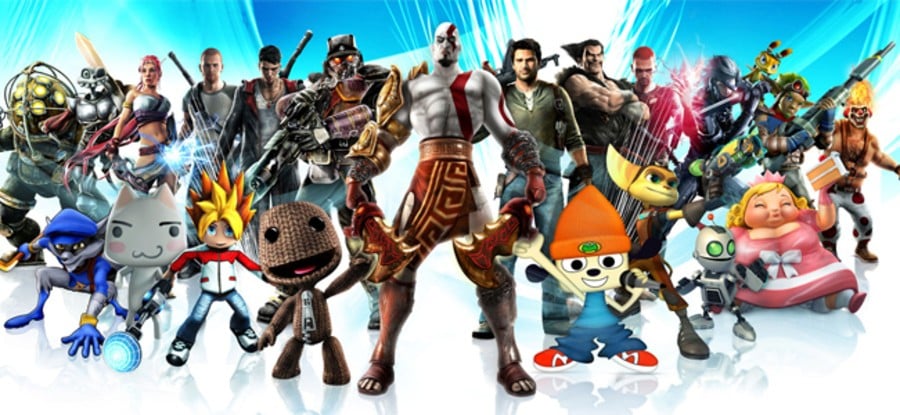
Since switching Capcom for Sony Santa Monica, lead game designer Seth Killian has been spending a lot of time with first-party upstart SuperBot Entertainment, where he’s been helping apply the finishing touches to PlayStation All-Stars Battle Royale. We were lucky enough to catch up with the fighting game aficionado, where we grilled him on balance, Crash Bandicoot, and lots more.
Push Square: It’s an honour to meet with you, thanks so much for chatting with us. To start with, we just wanted to get a quick catch-up. You joined the PlayStation All-Stars Battle Royale team quite late, so what’s been your input into the game?
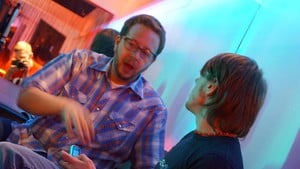
Seth Killian: Really it’s just been a case of making the most of what SuperBot Entertainment had already built. We’ve been working on polish and some presentation elements. We all had a hand in the trailer that you saw too, which is not really part of the game, but it’s a lot of fun, and we had a great time working on it. But also, we’ve been spending a lot of time on character details and balance. The latter is one of my big passions, and we’ll be working on that beyond the game’s launch. It’ll be an ongoing concern.
Honestly, it’s been an honour being able to work with SuperBot Entertainment, and a lot of people that I’ve played against and known in the fighting game community that all came together at the studio.
PS: You obviously weren’t involved with the game at the start of development, so what were your first impressions when you finally did get your hands on it?
I’ve wanted to make a game like this for a long time, and obviously Sony is one of the few companies that has the characters to pull it off
SK: Oh, I was worried about all sorts of things. I’ve wanted to make a game like this for a long time, I really like the game type, and obviously Sony is one of the few companies that has the characters to pull it off – but I was concerned about the way the controls were mapped. I was like, “Why doesn’t my Square button do the same attack with every character?” And I was also like, “Is my Super attack over here, or is it on L2? Oh no, that’s taunt.” So, I had a learning process to get there, but once I understood the inside of the game, I started to appreciate the decisions that the team had made.
A lot of individual designers put a lot of work into each character to make them represent their parent IP, so each button is built around a specific kind of attack. That’s a different way of looking at things. Obviously I come from many, many years of Capcom experience, where they have their own way of doing things. But that’s not the only way of making fighting games, so I really can value some of the genius behind the SuperBot approach.
PS: You mentioned that you've been involved in balancing the game. How do you go about balancing a game like PlayStation All-Stars Battle Royale, or any fighting game for that matter?
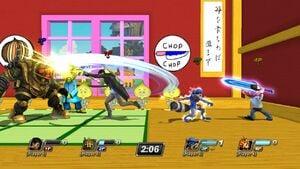
SK: You start by playing it a lot. So, you play a lot, and you try to watch as many good people as you can. Obviously, the beta was very helpful for us. But then this game has some very interesting elements in terms of balance. There are two things that I haven’t really dealt with before. The first is the super meter. Of course, you build a super meter in Capcom games as well, and the way certain moves build them matters, but not to the same degree as here. With super attacks being the only way you can score in the game, they matter hugely. So, you can really affect a character’s chances by turning up their AP gain or turning it down.
The other thing that was new to me was the sheer size of the play space. It really makes a difference in terms of the directionality of the attacks. So, for example, some characters are strong on a horizontal plane, while others are very proficient at vertical attacks. As such, this game has been all about balancing in a traditional sense – the moves, damage, and AP gain – but also, the character’s types of attack. We needed to constantly ask ourselves, “Where does this character need to be on-screen in respect to the others in order to take full advantage of his moves?” I’ve got to say, that’s been a really interesting aspect of making this game. Space control is one of the things I love most in video games, so I’ve been really excited about working on that.
PS: You’re probably not the best person to ask about this, but can you say anything about how SuperBot Entertainment went about the character selection process?
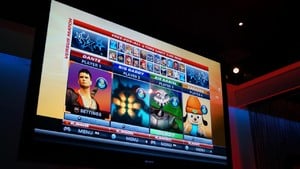
SK: I’m certainly familiar with it, and it’s still on-going, because, of course, we’re hoping to add characters with the DLC. The character selection process begins with us looking through PlayStation’s history to find protagonists that are going to be resonant and important, but we also want ones that are going to really bring something unique to the game. Ultimately, we don’t want everybody to be using guns – and even characters that are armed in the game, we’ve tried to really differentiate their style of attack in a way that’s representative of their parent IP.
But, on topic, after we’ve selected the characters, then it’s down to the designers to really bring out all of the elements of their respective properties. Ideally, we want people who love these characters from the past to say, “Oh, that’s awesome, I remember that.”
We try to put people who are really passionate about the source material to work on the design, because I always feel that when someone’s passionate about what they’re working on, it really brings out the best in the end product. So, there were a lot of characters that people on the team really loved, and we wanted to try and bring those into the game as well.
Media Molecule allowed us to make Sackboy bigger, otherwise he probably wouldn't have worked
PS: What was it like dealing with different IP holders?
SK: It’s all over the place, and different people have their own ways of handling their characters, but frankly it’s been an honour to have a chance to work with these different protagonists. At the end of the day, it’s not just like borrowing a sweat shirt or something from your friend.
PS: No, we imagine they’re very protective.
SK: That’s right. These characters are their babies. This is something that they've invested millions of dollars, and years – or, in some cases, decades – of their lives into. So, to lend them to us is a real show of trust. We've really tried to work hard and closely with the teams to represent their characters in both a new way, but also in a manner that they’re going to be happy with and excited about. And if they’re not, we go back and try to work it out.
Just to give you some examples, if Sackboy was his real size then he probably wouldn’t work as a character. But we were excited to have him in the game, and so [developer Media Molecule] were really supportive. They allowed us to make him a little bigger than he should have been, and that allowed us to build some great moves.

PS: The rivalry cut-scenes in the game are absolutely hilarious. How did you come up with some of those?
SK: Some were very natural. Nathan Drake and Sly, for example, are natural counter-parts because they’re both thieves.
PS: We thought that Nathan Drake should have been with Sweet Tooth because of the clown connection.
SK: Well, there you go. That’s not bad actually – and that’s exactly how we come up with these things. We liked the treasure hunter aspect, but it’s interesting to explore the different ways characters could match up. And who knows, if we get to do another one, maybe we could go down that direction.
Some of the other rivalries, we just thought were really fun. Obviously, Toro and Kuro from Japan, and Heihachi – who, of course, is also Japanese – are really ridiculous contrasts. That version of Heihachi is so serious. I mean, he’s a really humourless, vicious kind of guy, whereas the cats are good willed, but obviously they like to fight as well. [Laughs]. We had a lot of fun with that one.
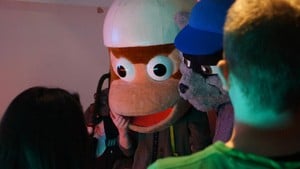
PS: We’re not sure how much you know about this, but SuperBot Entertainment’s mentioned in the past that PlayStation All-Stars Battle Royale started life as a capture-the-flag type game. What can you tell us about that?
SK: I played some older builds of the game, and really they were trying to get a feel for what they wanted to do. But, really, the SuperBot Entertainment team that was exploring those ideas was a really early version. It’s interesting – people understand that a game develops over time, but so does a team too. You start with quite a small group of people, and then you build that up to sometimes four or even five times as many people by the time you’re ready to finish the game. So, as the game settled into a fighting game, the team coalesced around that. And, obviously, that’s when we started drawing in so many fighting game experts. From the game director right down to the combat team, we really started building a team that knows how to make a fighting game, and that naturally became the focus.
PS: How did the leaks affect the game’s promotional plans? What was the feeling inside the studio when the news broke?
SK: Well, I think we had multiple leaks actually. The feeling probably started with irritation, and then it elevates from there. The problem with leaks, though, is that for every real leak, you get three or four fake leaks as well, or people suggesting things that aren’t actually the case. So that’s always hard, because that really muddies the waters.
The problem with leaks is that for every real leak, you get three or four fake leaks
PS: We think we know who you might be talking about.
SK: [Laughs]. Well, yeah, it gets muddy. On one hand, it’s difficult for the game, and ultimately it doesn't contribute to the title’s success. But on the other hand, as a big fan of games, I'm always quite happy when things leak because I'm excited about it and I want to hear more.
PS: Of course, people are excited as well, which is why they’re digging it up.
SK: Yeah, I mean, I completely appreciate the passion that goes into finding out some of these things. And, frankly, it’s our bad for letting them out of the door.
On page two we talk about PlayStation All-Stars Battle Royale's upcoming DLC, favourite characters, and the motivation behind Seth Killian's move to Sony Santa Monica.





Comments 6
Great work Sammy - really enjoyable read, this.
@KenB Glad you enjoyed it! Thanks for reading.
Wonderful interview Sammy! It's so interesting reading about the work that goes into balancing fighting games, I've never actually thought about it but I definitely appreciate it!
God, I can not wait to get this for Xmas
An excellent interview, I agree with @zipmon, it provides a nice insight into how much work goes into creating balance and an even sense of character symmetry in a fighting game, especially with a variety of distinctive IPs.
I have lost touch with the one-on-one and crossover fighter genres slightly over the years, especially as I was obsessed with arcade and SNES Street Fighter II in 1991/92. However, I played quite a bit of Street Fighter IV and Super Street Fighter IV with my cousin and our buddies, so I think Capcom did a great job of rejuvenating the genre for mainstream players in those games.
When Seth Killian announced he was leaving Capcom on the Capcom Unity blog, on June 22nd this year, I thought it was cool how respectful and appreciative gamers were of his work in the comments board. It is interesting to read more about some of his reasons for leaving Capcom in this interview.
I like that his name is ‘s-kill’, as it is perfect for someone who has developed a speciality in this genre, which is a game style that often demands you master its intricacies to become a competent player. As @get2sammyb suggests here, it could also explain why he plays as Nathan Drake in PlayStation All-Stars Battle Royale.
Awesome, awesome interview Sammy!
I'm really glad that you convinced me to get my butt out their and pick this game up - it's by far my Game of the Year!
Leave A Comment
Hold on there, you need to login to post a comment...